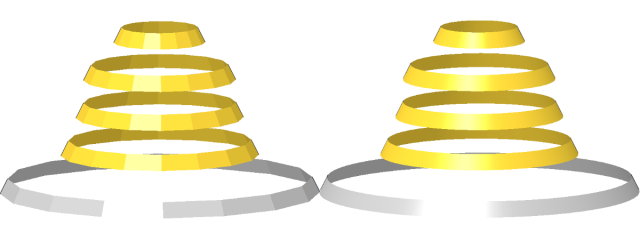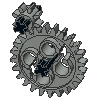| Welcome, Guest |
You have to register before you can post on our site.
|
| Online Users |
There are currently 213 online users.
» 0 Member(s) | 211 Guest(s)
Bing, Google
|
| Latest Threads |
About size of flattened s...
Forum: Official File Specifications/Standards
Last Post: Philippe Hurbain
1 hour ago
» Replies: 10
» Views: 209
|
Would BrickLink Designer ...
Forum: Official Models
Last Post: Orion Pobursky
Yesterday, 14:53
» Replies: 1
» Views: 181
|
Some help with part 5608 ...
Forum: Parts Authoring
Last Post: Peter Grass
2025-12-15, 5:48
» Replies: 1
» Views: 132
|
Parts Request: Ninjago Dr...
Forum: Part Requests
Last Post: Peter Grass
2025-12-14, 7:55
» Replies: 4
» Views: 472
|
Part Request Boat Pieces
Forum: Part Requests
Last Post: San
2025-12-13, 10:30
» Replies: 4
» Views: 307
|
Existing Part Edit Reques...
Forum: Parts Authoring
Last Post: SNIPE
2025-12-12, 19:33
» Replies: 157
» Views: 376,113
|
Technic 1990
Forum: Official Models
Last Post: Takeshi Takahashi
2025-12-10, 16:32
» Replies: 17
» Views: 23,029
|
Alternate, Mobile Friendl...
Forum: LDraw.org Announcements
Last Post: Orion Pobursky
2025-12-08, 18:53
» Replies: 2
» Views: 425
|
Request for sticker scan ...
Forum: Part Requests
Last Post: Sylvain Sauvage
2025-12-08, 13:40
» Replies: 3
» Views: 417
|
[LDPE] 1.8.97 Released (s...
Forum: Parts Author Tools
Last Post: Philippe Hurbain
2025-12-08, 7:56
» Replies: 1
» Views: 243
|
|
|
| OMR + TEXMAPped unofficial file = ??? |
|
Posted by: Philippe Hurbain - 2016-01-02, 8:26 - Forum: Official File Specifications/Standards
- Replies (51)
|
 |
OMR specification requires to include unofficial files (a very good thing!), but what to do when this unofficial part contains TEXMAP images? Can we imagine a way to include these images in MPD? How to make this compatible with applications that support TEXMAP (afaik LDView, LDCad, LeoCAD and Bricksmith)?
And a 2016 good new year's resolution: have TEXMAP images on Parts Tracker !
|

|
|
| LDView 4.2 > Display Problem for Prim. Subst. for 48\Cones larger than 9? |
|
Posted by: Gerald Lasser - 2015-12-31, 11:51 - Forum: LDraw Editors and Viewers
- Replies (11)
|
 |
When doing the 30398 I stumbled over a strange behavior in LDView.
To conclude:
If a file uses a cone larger than 9 from the Hi-Res primitives, i.e. starting from 48\4-4con10, AND LDView is set to use Primitive Substitution, the curve is not smoothed.
However if the file uses the standard primitive, 4-4con10, the smoothing works.
Anybody noticed this as well?
This code
Code: 1 14 0 5 0 1 0 0 0 2 0 0 0 1 48\4-4con5.dat
1 14 0 0 0 1 0 0 0 2 0 0 0 1 48\4-4con9.dat
1 14 0 -5 0 1 0 0 0 2 0 0 0 1 48\4-4con10.dat
1 14 0 -10 0 1 0 0 0 2 0 0 0 1 48\4-4con12.dat
1 16 0 -15 0 1 0 0 0 2 0 0 0 1 48\4-4con20.dat
giving no smoothing for the bottom three (10, 12 and 20)

and this code
Code: 1 14 0 5 0 1 0 0 0 2 0 0 0 1 4-4con5.dat
1 14 0 0 0 1 0 0 0 2 0 0 0 1 4-4con9.dat
1 14 0 -5 0 1 0 0 0 2 0 0 0 1 4-4con10.dat
1 14 0 -10 0 1 0 0 0 2 0 0 0 1 4-4con12.dat
1 16 0 -15 0 1 0 0 0 2 0 0 0 1 4-4con20.dat
results in proper smoothing:

|

|
|
| LDraw.org 2015-02 Parts Update Now Available |
|
Posted by: Chris Dee - 2015-12-30, 20:48 - Forum: LDraw.org Announcements
- Replies (2)
|
 |
The 2015-02 LDraw Parts Update has been now been released. This adds 439 new files to the core library, including 218 new parts and 15 new primitives. This update includes another batch of improved and corrected parts. This is largely due to the work of Roland Melkert with the 'libfix version' of LDCad. Significant effort has also been expended by Magnus Forsberg to inline dithered colour subfiles (a now obsolete technique).
Thanks are once again due to all the part authors who created or corrected parts for this release. The reviewers also play an important role in keeping files moving through the tracker and deserve just as much credit. I am pleased to see that some attention has been paid to the backlog of parts held for further work.
You can preview the new parts in 2015-02 here, download the zip-file update or Windows install package here. Alternatively you can use the LDView menu option File | Check for Library Updates... to install the update.
|

|
|
| LDCad 1.6 suggestions/plans |
|
Posted by: Roland Melkert - 2015-12-29, 22:40 - Forum: LDraw Editors and Viewers
- Replies (196)
|
 |
Hi all,
As the current 1.5 beta 2a version seems to be reasonably stable I decided to start work on the 1.6 version. I have a number of personal targets for this version, namely:
"must have's":
- More scripting (macro's, model generation through script etc)
- Allow hot key customization (this is also needed for my macro/script extension plans)
- Region selection (2d/3d rectangle/circle)
- Part bin group management / creation.
- MSAA LDraw rendering (this actually already works, so I might include it in the definite 1.5 version too).
"nice to have":
- POVRay animation export.
- Blender animation export.
But I'm also open for any ideas / suggestions users might have so please don't hesitate to post some of yours in this thread.
|

|
|
| Odd Request for Part Authors |
|
Posted by: Tyler Clites - 2015-12-26, 23:29 - Forum: Parts Authoring
- No Replies
|
 |
This is a bit of an odd request so bear with me.
I'm working on starting a business that would rely heavily on LDraw/MLCad. As such, I'd like to discuss some payed opportunities for part authors. Most emails here on the forums are hidden and the lack of a private message system is the reason I'm reaching out in this way.
If you are interested in finding out more about it please email me: tclites[at]gmail[dot]com
Thanks for taking time to indulge my odd request.
Tyler
|

|
|
|